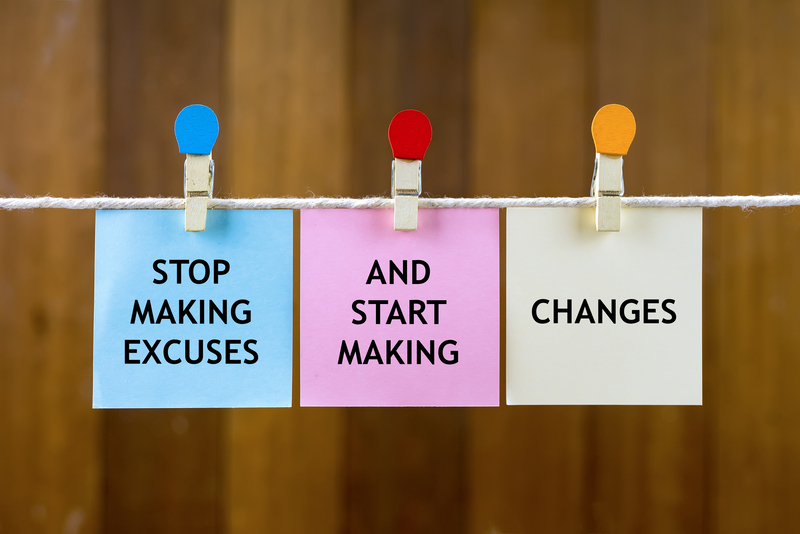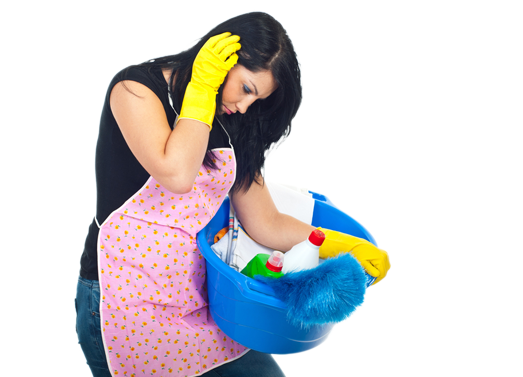Secrets to Streak-Free Glass Windows Revealed
Posted on 21/08/2025
Secrets to Streak-Free Glass Windows Revealed
If you have ever tried cleaning your home's glass windows, you know that achieving a streak-free shine can be frustratingly elusive. No matter how hard you wipe, it often seems like streaks just won't go away. But what if there were simple, science-backed methods to ensure your windows are crystal clear every time? This comprehensive guide is here to reveal the secrets to streak-free glass windows--helping you create a brighter, more inviting home.

Why Streak-Free Glass Matters
Clean, clear glass provides more than just aesthetic value:
- They maximize natural light, brightening your living and work spaces.
- Streak-free windows improve curb appeal, especially important if you're selling your home.
- Regular cleaning prolongs window life, preventing buildup that can damage glass over time.
With so many benefits, mastering the technique of streak-free window cleaning is an essential home maintenance skill.
What Causes Streaks on Windows?
Understanding the causes of streaks is the first step in eliminating them. Common culprits include:
- Using too much or too little cleaning solution.
- Ineffective or dirty cleaning materials.
- Improper cleaning methods or timing.
- Residual soap, minerals, or hard water deposits left behind.
Let's uncover how to defeat these obstacles and achieve truly streak-free glass windows every time.
Choosing the Right Tools for Streak-Free Glass
The path to streakless window cleaning starts with selecting quality equipment. Here's what you should have on hand:
- Quality microfiber cloths: Microfiber is designed to lift dirt and moisture, leaving glass spotless.
- Squeegee: A professional-grade squeegee ensures an even, residue-free finish on large windows.
- Soft-bristled brush or dusting cloth: For loosening dust and debris before applying liquid cleaner.
- Spray bottle: For easy, controlled application of cleaning solution.
- Buckets: One for your cleaning solution and one for rinsing.
- Distilled water: Hard water can leave mineral residue, so distilled is always best.
For high or hard-to-reach windows, consider an extendable squeegee or professional window cleaning tools.
Homemade vs. Commercial Glass Cleaners: Which Is Best?
Many commercial glass cleaners promise a streak-free shine, but homemade solutions can offer remarkable and eco-friendly results as well. Here's a comparison of both approaches:
Homemade Window Cleaner
- Mix 1 part distilled vinegar with 2 parts distilled water.
- Add a few drops of dish soap for extra degreasing power.
- You can add lemon juice for a fresh scent.
Commercial Glass Cleaners
- Brands like Windex or Sprayway are specially formulated to dissolve dirt and cut through grease.
- Always check for ammonia-free options to avoid damaging certain window films or tints.
Pro Tip: Test your chosen cleaner on a small area before applying widely, especially on tinted or specialty glass.
Expert Cleaning Techniques for Streak-Free Windows
The best tools and cleaners alone won't guarantee streak-free results. Technique is everything. Follow these steps for crystal-clear windows:
Step 1: Dust First
- Wipe windows with a dry microfiber cloth or brush to remove dust, cobwebs, and loose debris.
- Skipping this step can cause grime to smear and scratch the glass.
Step 2: Apply Your Cleaner
- Spray your cleaning solution sparingly from top to bottom.
- Avoid saturating the glass, as excess liquid can cause drips and streaks.
Step 3: Use the Squeegee
- Start at the top left corner and pull the squeegee horizontally across the window.
- After each pass, wipe the blade with a clean, dry cloth to prevent residue transfer.
- For smaller panes, work in straight vertical strokes.
Step 4: Detailing
- With a dry microfiber cloth, buff the edges and corners where solution may have pooled.
- Check for missed spots or streaks, repeating steps as needed.
Follow this method for both interior and exterior windows for consistently streak-free, sparkling results.
Common Window Cleaning Mistakes to Avoid
- Cleaning in direct sunlight: Heat causes cleaner to evaporate quickly, leaving streaks.
- Using paper towels or newspapers: These can leave lint or ink behind.
- Ignoring window frames and sills: Dirty frames can transfer grime onto freshly cleaned glass.
- Neglecting to rinse cleaning cloths: Reusing dirty cloths redistributes dirt and leaves marks.
- Spraying too much cleaner: Excessive liquid causes drips that can mix with dust.
The Ultimate Process for Streak-Free Window Cleaning
- Choose a cloudy day or clean early/late to avoid direct sunlight.
- Remove window screens and rinse them separately.
- Dust and vacuum sills and frames before addressing the glass.
- Use your cleaning solution with a clean microfiber cloth or squeegee.
- Work from top to bottom, overlapping each stroke slightly.
- Buff out any remaining streaks or drips immediately.
Insider Tips for Advanced Streak-Free Cleaning
- Change cloths and water often: Using fresh materials helps avoid transferring dirt right back onto your clean glass.
- For exterior windows, hose down before cleaning: This removes surface grit and prevents scratches.
- Add alcohol or cornstarch: A tablespoon of alcohol or cornstarch in your cleaning solution can further reduce streaks by helping the solution evaporate evenly.
- Treat hard water stains: Use a mixture of vinegar and baking soda paste, let sit, then rinse thoroughly.
- Work quickly but efficiently: The less time the cleaner sits on the glass, the less chance for streaks to form as it dries.
How Often Should You Clean Your Windows?
The frequency of window cleaning depends on location, weather, and air quality:
- Residential windows: At least once every 3-6 months. More often if you are near construction, busy roads, or have pets and kids.
- Commercial windows: Should be cleaned monthly for a professional appearance.
- After storms or pollen season: Clean windows as soon as you notice a film or buildup to prevent permanent staining.
Bonus: Streak-Free Techniques for Other Glass Surfaces
These expert streak-free glass cleaning tips can also be used for:
- Mirrors
- Glass shower doors
- Glass tabletops
- Oven doors
- Car windows and windshields
For each, use the same high-quality cloths, streak-free cleaner, and careful technique--always finishing with a buff using a dry microfiber cloth.
Professional Window Cleaning: When to Call the Experts
While DIY streak-free window cleaning works well for most homes, some situations call for a professional touch:
- Hard-to-reach, large, or multi-story windows
- Tough stains or mineral deposits
- Specialty glass, such as stained or leaded
- Windows surrounded by landscaping or delicate features
A professional window cleaner uses commercial-grade equipment and solutions to deliver impeccable, long-lasting results--often in a fraction of the time.
Eco-Friendly and Allergen-Free Window Cleaning
Concerns about chemical cleaners are valid--some solutions can irritate allergies or harm pets and children. For a greener approach, stick with non-toxic, DIY cleaners such as the classic vinegar and water mix. This approach avoids harsh fumes and is safe for everyone.

Final Thoughts: Reveal the Brilliance of Your Clean Glass Windows
There's no great mystery behind achieving streak-free glass windows. With the right tools, the proper cleaner (homemade or commercial), and a practiced technique, anyone can enjoy sparkling, streakless surfaces throughout their home or office.
- Remember to work methodically, avoid common mistakes, and buff away lingering marks for a flawless finish.
- Adopt a regular cleaning schedule, and address stains and buildup promptly for best results.
- Consider professional help for especially challenging jobs or whenever safety is a concern.
Let the sunshine in through your streak-free windows and transform your spaces with clarity and brilliance!
Frequently Asked Questions About Streak-Free Glass Window Cleaning
-
What is the best way to get windows streak-free?
Use a microfiber cloth and squeegee with a vinegar-based solution. Work top to bottom and buff dry for spectacular results. -
Can I use paper towels to clean windows?
It's best to avoid paper towels. They can leave lint and tiny fibers behind. Use microfiber cloths instead. -
Why do my windows still look cloudy after cleaning?
This could be from hard water minerals. Try a vinegar and water solution, and scrub gently with a soft cloth or non-abrasive sponge. -
Is vinegar safe for all glass types?
Vinegar is safe for regular glass, but avoid using it on stone or marble surfaces around windows, or on any tinted glass without testing first.
By integrating these insider streak-free window cleaning secrets into your routine, your home or office will benefit from clearer, more beautiful glass surfaces for years to come. Enjoy your view, uninterrupted by streaks or smudges, and let every window reflect your clean and organized lifestyle!





